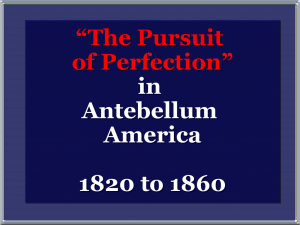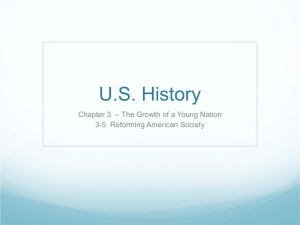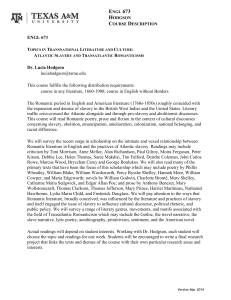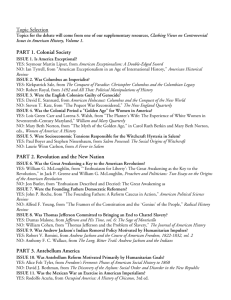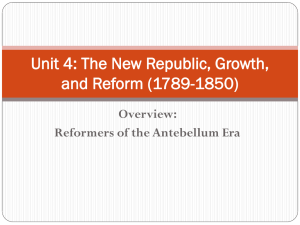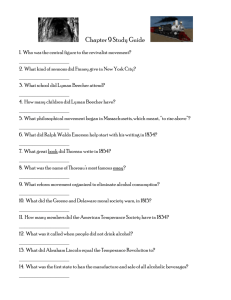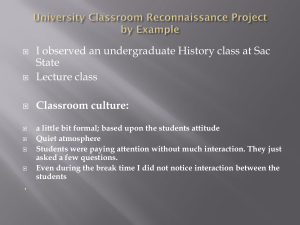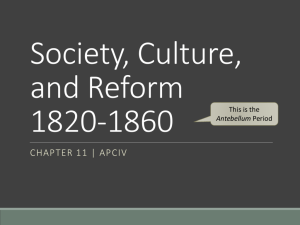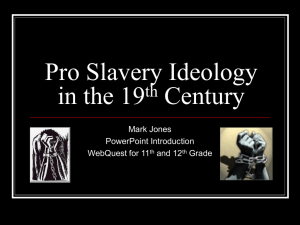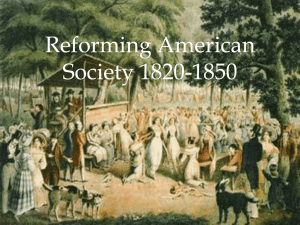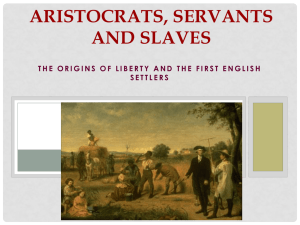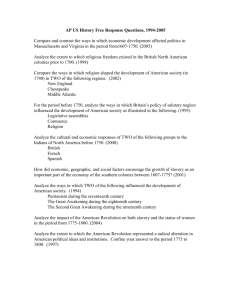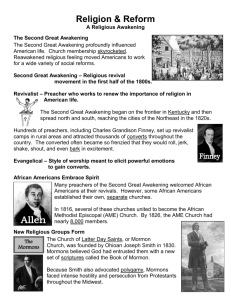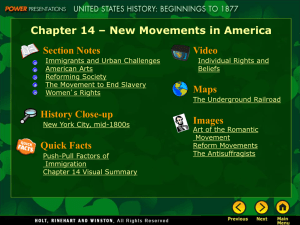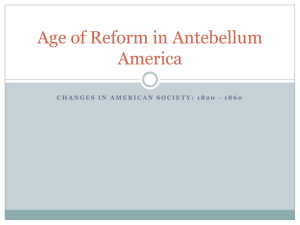Chapter 15
advertisement
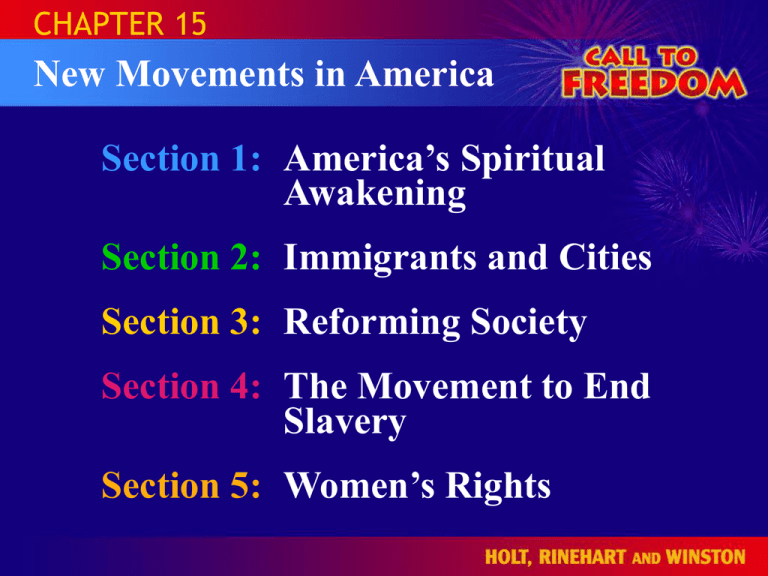
CHAPTER 15 New Movements in America Section 1: America’s Spiritual Awakening Section 2: Immigrants and Cities Section 3: Reforming Society Section 4: The Movement to End Slavery Section 5: Women’s Rights SECTION 1 America’s Spiritual Awakening Question: Who were the key people and what were the key ideas of the American romantic movement? SECTION 1 America’s Spiritual Awakening Definition of Romantic Movement artistic movement that developed out of the movement in Europe, in which American painters and writers believed in bringing a simpler, more individual point of view to their works Influential Ideas romantic movement in Europe, spirituality, the simple life, nature, individual’s uniqueness Focus of Work landscape, nature, history, slavery, American individualism and democracy Artists and Writers Thomas Cole, Emily Dickinson, Nathaniel Hawthorne, Edgar Allan Poe, Walt Whitman SECTION 2 Immigrants and Cities Question: What were the problems and benefits of growing U.S. cities in the mid-1800s? SECTION 2 Immigrants and Cities Growth of U.S. Cities Problems Benefits • • • • • job opportunities • growth of middle class • entertainment and cultural life overcrowding poorly built housing poor sanitation no permanent fire or police force • diseases and epidemics • lack of public services SECTION 3 Reforming Society Question: What were the causes and effects of the American temperance movement? SECTION 3 Reforming Society The Temperance Movement Cause: belief that alcohol abuse led to social problems, such as family violence, poverty, and criminal behavior Cause: prevention of alcohol abuse Cause: worry over the effects of alcohol Effects: Maine and 12 other states passed laws making the sale of alcohol illegal SECTION 4 The Movement to End Slavery Question: By what methods did abolitionists and supporters of slavery spread their messages? SECTION 4 The Movement to End Slavery Spreading the Message Working to End Slavery Working to Keep Slavery • • • • • • • • speaking tours and lectures newspapers pamphlets and essays poetry, plays, and slave narratives • abolitionist societies • essays • petitions to Congress newspaper editorials political speeches threats to abolitionists federal laws SECTION 5 Women’s Rights Question: What were the goals of the women’s rights movement and how did they hope to achieve these goals? SECTION 5 Women’s Rights gain the right to vote take advantage of better educational opportunities getting men to take part in the fight gain the right to sit on juries Women’s Rights married women get the right to control their own property organizing more effectively CHAPTER 15 Chapter Wrap-Up 1. How did the Second Great Awakening affect reform movements of the mid-1800s? 2. How did U.S. immigration between 1840 and 1860 affect the economy? 3. Choose three of the following people and explain how they worked to end slavery: Robert Finley, David Walker, William Lloyd Garrison, Angelina and Sarah Grimk, Frederick Douglass, and Harriet Tubman.
